Considering the Penetration Division: Implications for Multi-Domain Operations
Considering the Penetration Division: Implications for Multi-Domain Operations
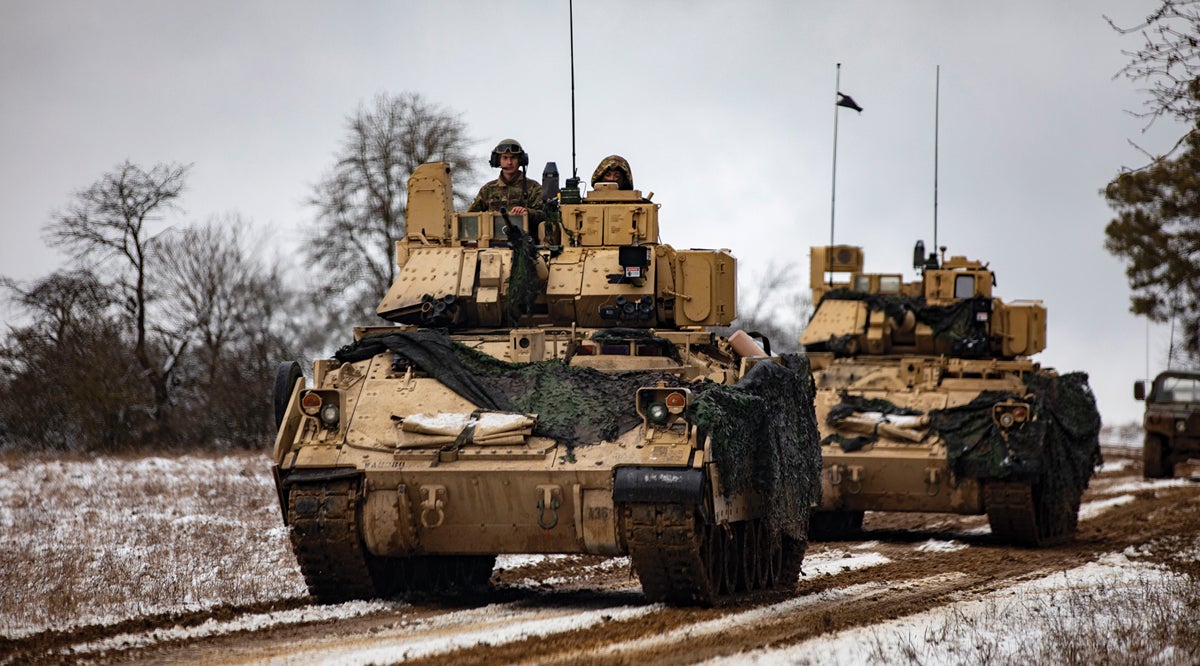
by LTC Nathan Jennings, PhD, USA
Land Warfare Paper 145, April 2022
Due to significant development in this arena that has arisen out of the Russo-Ukrainian War, this paper was updated by the author and republished as Maneuver and Breakthrough in 1940 France: Insights for the U.S. Army and the Russo-Ukrainian War in January 2024.
In Brief
- The adoption of the Penetration Division, in concert with similar redesigns for airborne and air assault forces to better achieve rapid forcible entry, holds foundational implications for the U.S. Army as it modernizes for large-scale combat operations.
- This essay explores the theoretical and historical implications of combining operational penetration with the MDO concept and provides concluding insights to inform implementation by the operational force.
- Historically representing both a high-risk and high-reward endeavor that requires systemic integration and asymmetric advantages to enable success, the enhanced armored formation has the potential to empower, or conversely limit, the landpower institution’s capacity to achieve decisive outcomes.
- As a cornerstone of the emerging Multi-Domain Operations (MDO) doctrine, the Penetration Division represents a continuance of an American way of war that prizes firepower and technology at the expense of time and attrition.
Introduction
Following two decades of focus on expansive counterinsurgency and counter-terrorism campaigns across the Middle East, the U.S. Army is embracing Multi-Domain Operations (MDO) as a new battle doctrine to compete and win against peer competitors in the 21st century. This seminal transition includes structural emphasis on empowering theater armies to converge joint and interagency efforts, modernizing corps to defeat sophisticated adversary defenses, and functionalizing divisions with specific tactical profiles to enable ranges of cross-domain fire and maneuver. The modernization effort will enable American forces, as required by General Mark Milley, the 20th Chairman of the Joint Chiefs of Staff, to “achieve a perfect harmony of intense violence” with “overmatch in all five domains of warfare.”1
As part of the effort to transform the Army’s order of battle—which had previously maximized brigade combat team (BCT) capability for wars in Iraq and Afghanistan—into an echeloned ground force that is optimized for high-intensity combat, the landpower institution is developing an MDO-capable formation called the Penetration Division. Representing the “sum of the Army’s thinking about large-scale combat operations,” as argued by the U.S. Army Combined Arms Center, the newly designed command will be uniquely empowered with an enhanced combined-arms armored profile to “conduct the joint force’s most demanding operations,” including breaching prepared defenses and leading contested gap-crossings against peer adversaries.2
This focus on developing a purpose-built formation with echeloned fires and reconnaissance capacity to shape deep areas and bridge the tactical and operational levels of war represents not only structural modernization, but a conceptual shift by the Army toward providing the MDO concept, at least in part, with the option of employing the penetration form of maneuver along with traditional flank or envelopment actions. Recognizing the requirement to defeat sophisticated adversary antiaccess/area denial (A2/AD) defenses in expeditionary settings, the new division provides the Army with a purpose-built, cross-domain capability to execute penetration attacks to dis-integrate (as opposed to flank and envelopment actions that isolate) in order to defeat an enemy in-depth—while avoiding the perils of attrition, exhaustion and culmination.3
The adoption of the Penetration Division, in concert with similar redesigns for airborne and air assault forces to better achieve rapid forcible entry, and as a viable tactical instrument, thus holds foundational implications for both U.S. joint forces and coalition partners. Historically representing both a high risk and high reward endeavor that requires systemic integration and asymmetric advantages to enable success, the redesigned armored formation has the potential to empower, or conversely limit, the Army’s capacity to achieve decisive outcomes. As a new factor in the emerging MDO doctrine, it represents a continuance of an American way of war that prizes firepower and technology to avoid attrition and culmination.4 In this context, consideration of the design begins with understanding the theory and history behind the concept.
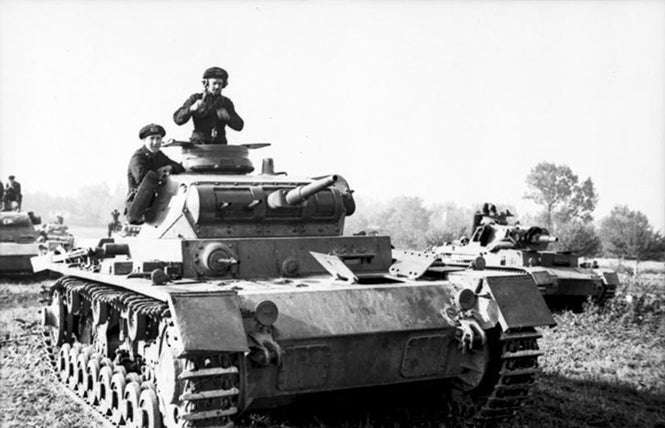
Theoretical and Historical Context
The concept of employing mobile forces with high-end capability to penetrate an enemy’s prepared front is not a new idea. Recognizing that armies operate as combined arms entities that rely on cohesion and convergence to succeed, penetration formations have historically conducted relatively narrow, but operationally deep, attacks through breaches, gaps or seams along an extended enemy front to strike at headquarters, lines of communication, logistics nodes and rear areas in order to physically dislocate and psychologically fracture the opposing force. The maneuver, which encompasses a theory of victory that prioritizes speed and shock action to win decisively while avoiding longer attritional fights, represents a complicated maneuver that can be extremely difficult to execute.5
Despite the aspirational benefits, the very nature of the penetration maneuver incurs enormous risk for the attacking army. The deep attack along a relatively narrow axis means that assaulting elements may be vulnerable to counter-attacks along their ever-extending flanks, and that they must possess the operational reach and striking power to attack enemy centers of gravity that will catalyze systemic collapse. Furthermore, penetration forces must attack with requisite speed, sustainment, gap crossing ability and shock effect to advance within the enemy command’s decision cycle—thus preventing recovery and counter-attack before follow-on friendly forces can exploit, as described by MDO doctrine, the emerging “windows of superiority” created by the sudden disruption in adversary cohesion.6
The challenges of a successful penetration attack reveal why, throughout history, most generals have aimed for, as described by British theorist Liddell Hart, a more “indirect approach” to winning decisively.7 Arriving as a flank or envelopment attack that relies on circuitous maneuver to avoid costly frontal assaults—which became more and more costly with the industrialization of warfare—renowned generals such as Hannibal the Great, Frederick the Great, Helmuth von Moltke, Ulysses Grant, George Patton and Norman Schwarzkopf each achieved seminal victories by mastering this approach. If Hannibal’s double-envelopment of the Romans at Cannae in 216 BCE exemplified the ideal for millennia, Schwarzkopf’s desert envelopment of the entrenched Iraqi Army in 1991 serves as a more recent manifestation.
However, despite the incurred risks, some of history’s most effective commanders have employed operational level penetration to achieve stunning victories. A brief survey includes Alexander the Great’s employment of massed heavy cavalry to defeat a larger Persian force at Gaugamela, Napoleon Bonaparte’s shattering of a combined Austrian-Russian army at Austerlitz with an exquisitely timed center assault, and, in a more limited extent, the Allied mechanized attack at Amiens that broke the German Army in the final year of World War I. In each of these examples, the victorious force employed a deep attack along a relatively narrow axis to strike critical elements in a prepared enemy’s rear area, ultimately causing a cascading disintegration of their ability to fight and resist.
Yet, of all the successful penetration attacks in history, perhaps none balanced fire, maneuver and risk at the operational level with greater effect than the German Army in the Battle of France. Unfolding as one of the pivotal moments of World War II, the Germans shifted to a hastily adopted plan in 1940, designed to fix the main Anglo-French armies in the north along the Belgian frontier, while simultaneously attacking with massed Panzer divisions in the theater center. The offensive, which would come to be known as Blitzkrieg (literally, “lightning war”) due to the unprecedented speed, shock and depth of the assault, aimed to avoid a repeat of the attritional horrors of World War I by combining massed armor with dedicated air support, achieving operational breakthrough at a seam just north of the French Army’s vaunted Maginot Line.8
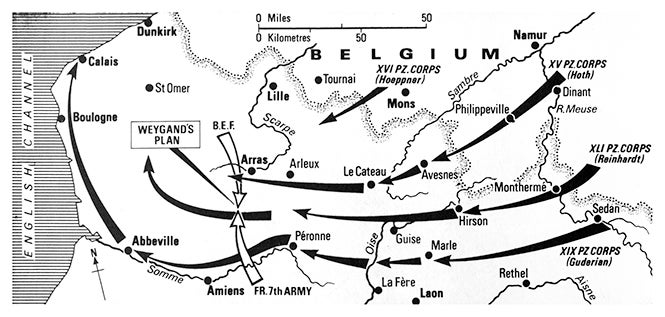
Figure 1: Panzer Corps' Advance During the Battle of France
The critical action of the German offensive proved to be Panzer Group Kleist’s attack near Sedan, which required a contested crossing of the Meuse River. With the XIX Panzer Corps under Heinz Guderian in the lead, the Germans emerged from the seemingly impassable Ardennes Forest and forced several precarious—and almost denied—gap crossings to seize footholds in French territory. Then, against all conventional practices, and benefiting from the mobility of the Panzer divisions, the invaders risked an immediate advance toward the English Channel as the French struggled to contain the breakout. Stemming from a combination of German audacity, missed French opportunities, and even sheer luck, the Germans had seized a scope of operational initiative previously thought to be impossible.9
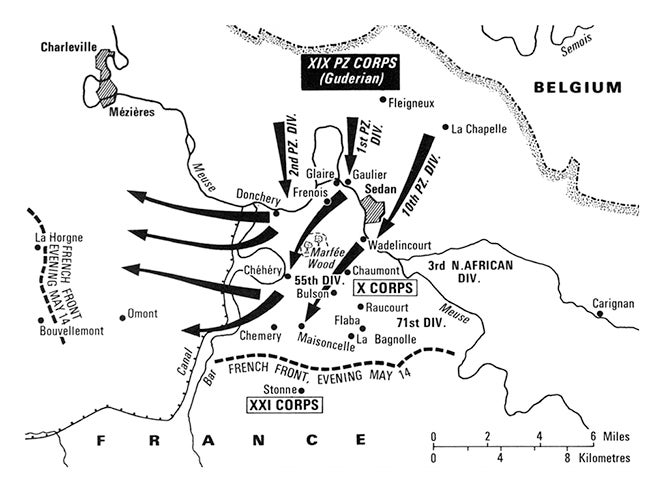
Figure 2: Battle of Sedan
The breakthrough at Sedan set conditions for the penetration and dis-integration of France’s entire strategic defense. Sensing the French Army’s collapsing cohesion, and their failure to launch meaningful counter-attacks against their exposed flanks, the lead Panzer divisions attacked northwest toward Amiens along an increasingly precarious axis, with intent to cut across the rear of the main Allied armies that had marched into Belgium. The resulting race to the Channel, which Guderian misleadingly reported as a “reconnaissance in force” when the German high command attempted to halt him over concerns of imminent culmination, effectively isolated the most effective French forces in Belgium at minimal cost while catalyzing confusion and despair across the French senior leadership.
The subsequent total defeat of the Allied armies in Belgium set conditions for a strategic victory that shocked the world. Yet, while the massing of armored forces had proved central to German success, the penetration maneuver could not have succeeded without two additional factors: the novel installment of radios in all fighting vehicles that allowed communication between maneuvering forces, and, perhaps more important, the Stuka Dive Bombers that provided shaping fires, or “vertical artillery,” for the advancing Panzers. These two innovations, as much as the all-arms mechanized divisions themselves, provided critical asymmetric advantages for combining fire and maneuver that enabled the German invaders to deflect French counter-attacks, avoid attritional losses and prevent culmination.10
Operational Penetration and MDO
Similar to the German embrace of Blitzkrieg in the early years of World War II, the contemporary U.S. Army’s adoption of the Penetration Division represents a particular maneuver solution to an intractable adversary problem. As argued by General James McConville, the 40th Chief of Staff of the Army, it reflects the next step in the evolution of MDO’s promise to “provide the joint force with the range, speed and convergence” that will be needed to “provide future decision dominance and overmatch required to win the next fight.”11 By placing operational penetration at the center of its expanding battle concept, America’s primary landpower institution is once again aligning its form and function to achieve decisive victory in the most challenging circumstances.
This move toward a more audacious and risky operational approach consequently requires examination of both theoretical and historical insights from past experiences. First, at the most basic tactical level, pattern analysis of previous large-scale attempts at operational penetration indicate that the division must possesses an enhanced organic mobility and capacity to be able to complete deeper attacks into enemy rear areas. While protection and firepower remain critical, the capacity to sustain an accelerated rate of march—exemplified by Guderian’s lightning march on the Channel—allows the attacker to seize initiative within the adversary decision cycle. The continued advance, despite the increasing risk of culmination, creates multi-faceted dilemmas for the defenders as cohesion begins to fracture.12
The penetration element’s requirements for tactical mobility include the critical capability to execute contested gap crossing operations. River systems present one of the key obstacles that can slow or deny the execution of operational penetration, especially when overwatched by a prepared defense-in-depth. Similar to Guderian’s precarious crossing over the Meuse—which initially proved a desperate and frantic action as his three Panzer divisions struggled to establish footholds—failure at the point of crossing, for any reason, can slow or stymie the main effort of the attack. The resulting risk to mission suggests that corps and field armies must exactingly synchronize joint and Army fires, sequence engineer assets and lead assault elements to ensure continued rates of advancement.13
The second critical factor to the success of an operational penetration is tactical sustainment. Because its ever-elongating lines of communication will be vulnerable to disruption by enemy attacks, inclement weather, adverse terrain and discoordination, the primary penetration formation must carry most of its fuel, ammunition and provisions in its organic trains to ensure continued advancement. In the case of Panzer Group Kleist’s penetration at Sedan in 1940, the German high command reinforced its organic logistical trains with three additional motor transport detachments to add an additional 4,800 tons of carried supplies. The result was that Guderian’s Panzer corps attacked all the way to Calais without a single sustainment interruption that had not been negotiated within the group.14
This requirement to sustain a continuous extension of ground and air operational reach creates significant dilemmas for the contemporary U.S. Army. Already posing significant challenges for its armored BCTs and heavy divisions due to extraordinarily high consumption requirements, the Penetration Division’s need for vast quantities of fuel, ammunition, durables and provisions will multiply the problems of projecting sustainment along rapidly extending lines of communication. Similar to the German logistical solution for Panzer Group Kleist in 1940, the Army’s lead armored division will likely be required to carry most, if not all, of their required supply, both to avoid interruption or culmination at critical moments in the advance and to allow fulfillment of the MDO concept.15
The third lesson moves beyond tactical considerations and into operational design. Analysis of successful penetration maneuvers reveals that it is not sufficient just to have a mobile and sustained penetration formation; the idea must be integrated within a coherent operational concept that capitalizes across all domains of warfare to create inescapable dilemmas for the enemy command. Furthermore, as exemplified by the German innovation with employing dive bombers to shape maneuver, any concept built around operational penetration must possess meaningful asymmetric offsets across other combat arms, functions or domains. This provides the necessary time and space for the ground assault to achieve the depth of advance that is required to systemically and physiologically dislocate the enemy command.16
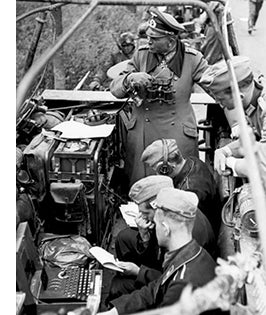
This requirement means that the Penetration Division must develop within the evolution of MDO as a mature operational concept. Just as the Germans combined tactical communication and air power to shape conditions for the ground advance, the U.S. Army must fully leverage internetworked fires from across land, air, maritime, cyber and space domains—even as it operationalizes emergent technologies such as artificial intelligence, autonomous robotics, hyper-ranged weapons, drone technologies, electronic warfare and space capabilities—to create synchronized windows of superiority.17 The rapidity of the penetration, which may require the bypassing of enemy strongpoints, will likewise compel mission command philosophy by forward commanders in order to maintain planned rates of advance.
A fourth consideration, which also relates to operational design, is the aim of the operational penetration as it seeks to catalyze a systemic failure of the enemy order of battle. While some historical examples, such as Alexander the Great’s cavalry attack at Gaugamela, achieved success by striking an identified center of gravity such as a command and control node, others, including the German army in the Battle of France, have employed the arc of the penetration to isolate major elements of the enemy forces, causing both physical and psychological collapse. In the latter example, the German deception plan worked perfectly to lure the most capable Allied field armies into Belgium, where they presented Panzer Group Kleist with the opportunity to maneuver behind them, sever their vital lines of communication back to the French heartland, and rapidly convince the French national leadership that strategic defeat had become inevitable.18
This kind of precise aim for the operational penetration naturally requires an exquisite understanding of the adversary’s operational center of gravity, critical vulnerabilities and psychological dependencies to enable accurate campaign design. For the U.S. Army, as it develops its MDO concept, this means that ground maneuver must both leverage—and sometimes enable—joint fires, multinational capabilities and interagency effects that seek to dis-integrate enemy A2/AD networks by striking or isolating key elements, thereby creating fatal disruptions and cognitive confusion. Usually featuring targets that are located in the enemy rear area where systemic fracturing will explode to infect and confuse frontline combat forces, the application of advanced operational art to achieve the penetration and subsequent dislocation provides an avenue by which to avoid the attritional contests that often occur when armies engage in symmetrical clashes where strength matches strength.19
A fifth consideration, which also relates to operational design, centers on the employment of operational deception to create advantageous conditions for the penetration force to achieve its objective. Historically, winning commanders have successfully arranged tactical actions to specifically deceive enemy forces as to intent for a center assault, or to entice the opposing force to dilute combat power at a critical seam or breaching point along the front. While the Macedonians enticed the Persian cavalry to extend its line with an enveloping feint, and Napoleon intentionally left his right flank weakened to entice the Russians to move forces from their center to attempt an envelopment, the Germans likewise deceived the French in 1940 into believing that their main effort was attacking through Belgium instead of at Sedan.20
This requirement will likely prove equally as critical to achieving successful operational penetration in the 21st century. While future deceptions will enhance traditional offensive and defensive ground force arrangements with emergent electronic, informational and political warfare schemes, the purpose will remain the same: to deceive or entice the adversary to unintentionally reveal or provide some kind of entry point and avenue for the penetration force to strike a debilitating aspect on the enemy center of gravity.21 Just as in previous eras, successful deception, at the operational level, will require commanders to develop a measure of coup d’œil, or operational intuition, to acquire an exquisite understanding of battlefield terrain, enemy intentions, cultural predilections and systemic weaknesses; with a proper comprehension of all of these elements in hand, it becomes possible to create favorable conditions for the actually intended form of maneuver.22
The final insight considers how operational penetration relates to military strategy. As a discreet operational approach, the potential employment of this exceptionally precise maneuver within a new battle concept such as MDO—whether as an ad hoc device or within a doctrinal framework—offers both high risk and high reward for prospects of strategic success. While on one hand the spatial geometry of operational penetration incurs risk of early culmination due to numerous aspects of Clausewitzian friction that could stall the advance, on the other hand, it arguably offers an expeditionary force with an avenue to achieve a Jominian decisive victory with the least amount of casualties. If the former demands rational analysis of probabilities and enemy intention, the latter remains an attractive option for sophisticated armies with finite capacity to endure attrition.
Conclusion
This question of strategic utility, and balancing of strategic risk and reward, means that the integration of the Penetration Division concept must ultimately lead to battle outcomes that position American-led coalitions to attain, as described by theorist Everett Dolman, a “position of continuing advantage.”23 As an emergent factor in how future operational art will connect evolving strategy and modernizing tactics, the adoption of operational penetration as a foundational element of the U.S. Army’s theory of victory will have systemic and cultural implications for how it participates in the American way of war. Recognition of these factors becomes especially acute given the nuclear context of great-power confrontation, and how MDO will both challenge and accommodate the current strategic paradigm.24
In the final analysis, as articulated in the U.S. Army’s own vision for transformation, the institution must modernize in order to “prevail from competition through conflict with a calibrated force posture of multi-domain capabilities” that “provide overmatch through speed and range at the point of need.”25 The adoption of the Penetration Division, representing an important addition to the MDO concept, reflects a decision to potentially emulate previous armies who achieved decisive outcomes by pursuing some of the most demanding operational approaches in the history of warfare. If a concerted focus on operational penetration provides a pathway to enable the U.S. joint forces to achieve future success, the challenges of accomplishing such a high-risk—and ultimately high-reward—maneuver should likewise inspire caution.
★ ★ ★ ★
Lieutenant Colonel Nathan Jennings is an Army Strategist and Assistant Professor at the U.S. Army Command and General Staff College. He served multiple combat tours in Iraq and Afghanistan, is a graduate of the School of Advanced Military Studies, and he holds a PhD in History from the University of Kent.
- Mark Milley, quoted by Sydney Freedberg, “‘A Perfect Harmony of Intense Violence’: Army Chief Milley on Future War,” Breaking Defense, 9 October 2018.
- Lieutenant General Martin, “WayPoint in 2028 – Multidomain Operations,” U.S. Army Combined Arms Center, accessed 20 December 2021, video, 14:00.
- Department of the Army (DA), Army Doctrine Publication (ADP) 3-90-1, Offense and Defense Volume 1 (Washington, DC: U.S. Government Printing Office, March 2013), 1-3.
- Colin Gray, “The American Way of War,” in Rethinking the Principles of War, ed. Anthony D. McIvor (Annapolis, MD: Naval Institute Press, 2005): 30–33.
- DA, Field Manual (FM) 3-90-1, Offense and Defense (Washington, DC: U.S. Government Printing Office, 1 March 2013), 1-3.
- DA, U.S. Army Training and Doctrine Command Pamphlet 525-3-1, The U.S. Army in Multi-Domain Operations 2028 (Washington, DC: U.S. Government Printing Office, 6 December 2018), 20.
- B.H. Liddell Hart, Strategy, 2nd ed. (New York: Frederick A. Praeger, 1968), 17.
- Karl-Heinz Frieser, “Panzer Group Kleist and the Breakthrough in France, 1940,” in Historical Perspectives of the Operational Art, eds. Michael D. Krause and R. Cody Phillips (Washington, DC: U.S. Army Center of Military History, 2005), 169–179.
- “Panzer Group Kleist” in Historical Perspectives, 172–174.
- Williamson Murray, “May 1940: Contingency and fragility of the German RMA,” in The Dynamics of Military Revolution, 1300–2050, eds. MacGregor Knox and Williamson Murray (Cambridge: Cambridge University Press, 2001), 162–163.
- DA, Chief of Staff Paper #1, “Army Multi-Domain Transformation: Ready to Win in Competition and Conflict,” (Washington, DC: U.S. Government Printing Office, 16 March 2021), i.
- “Army Multi-Domain Transformation,” 7–8.
- FM 3-90-1, Offense and Defense, 1-32.
- Karl-Heinz Frieser, “Panzer Group Kleist and the Breakthrough in France, 1940,” 170–171.
- DA, FM 4-0, Sustainment Operations (Washington, DC: U.S. Government Printing Office, July 2019), 7-1.
- FM 4-0, Sustainment Operations, 177–178.
- Nathan Jennings and Adam Taliaferro, “Tempo, Cohesion, and Risk: Towards a Theory of Multi-Domain Warfare,” Wavell Room, 18 June 2021.
- Karl-Heinz Frieser, “Panzer Group Kleist and the Breakthrough in France, 1940,” 178–179.
- Jennings and Taliaferro, “Tempo, Cohesion, and Risk.”
- Karl-Heinz Frieser, “Panzer Group Kleist and the Breakthrough in France, 1940,” 171–172.
- Christopher Rein, “Weaving the Tangled Web: Military Deception in Large-Scale Combat Operations,” Military Review (September–October, 2018): 11.
- William Duggan, “Coup d’Oeil: Strategic Intuition in Army Planning,” Army War College Strategic Studies Institute, November, 2005.
- Everett Dolman, Pure Strategy: Power and Principle in the Information and Space Age (London: Frank Cass, 2005), 26.
- Jasmin J. Diab, “Nuclear Strategy,” in On Strategy: A Primer, ed. Nathan Finney (Fort Leavenworth: Combat Studies Institute Press, 2020), 193–194.
- “Army Multi-Domain Transformation,” 1.
The views and opinions of our authors do not necessarily reflect the views of the Association of the United States Army. An article selected for publication represents research by the author(s) which, in the opinion of the Association, will contribute to the discussion of a particular defense or national security issue. These articles should not be taken to represent the views of the Department of the Army, the Department of Defense, the United States government, the Association of the United States Army or its members.

